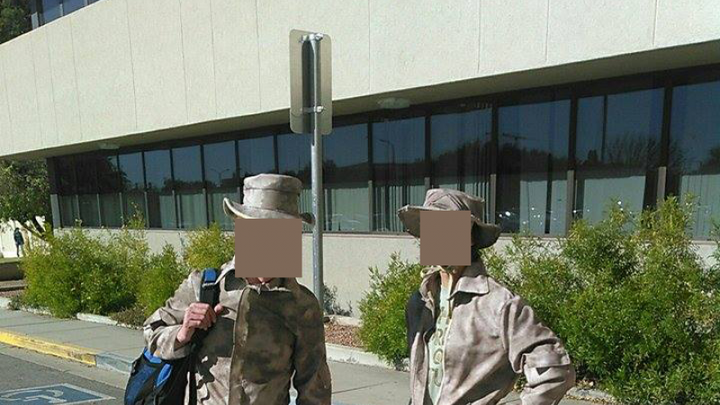
Macropatterned Fourier Camouflage
The Importance of Camouflage
Camouflage is a widespread and useful tool, not only in nature, but for human hunters and soldiers. Camouflage can help one to remain unseen while scouting, it can help one to retain the element of surprise for as long as possible, and it can make one less vulnerable to being attacked.
In the context of hunting, it can help one to be a more successful hunter, but in the case of warfare, camouflage saves lives.
Many militaries have spent the last decade or more actively pursuing better and more effective camouflage patterns, including not just the US and the UK, but the Netherlands and Canada as well.
Theory
Camouflage geometry can work in two ways.
First, it can match the background with blobs of appropriate size and shape. This makes a target more difficult to notice. This envrionment-matching approach is referred to as 'micropatterning.'
Second, it can break up the shape of the person wearing it, such as with stripes or branching shapes that cut across the body. This makes the target harder to recognize, particularly once it has been seen, or if the blobs do not match the background in size or contrast. Breaking up the shape of the wearer is referred to as 'macropatterning.'
It is considered state of the art for a camouflage to incorporate both methods. One of these patterns is Dual-Tex. Using computer-generated patterning and pixels, Dual-Tex aimed to match the texture of the background, while also cutting across the body of the vehicle it was applied to with broad stripe-like shapes. (1)
However, more recently, the Dutch have developed a new camouflage pattern. This camouflage only tries to match the background, rather than actively breaking up the wearer's shape. However, by using a Fourier spectrum derived from the expected terrain, this camouflage has elements of all sizes, from small to medium to large. Thus, it is expected to match the background at all distances, and thus blend in effectively enough without needing to disrupt or cut across the wearer's shape as well. (2)
Our Project
Our project aims to evaluate which approach is best. Is the conventional wisdom of both breaking up the target's shape and matching the background still the best approach? Or does a camouflage pattern with a suitably wide range of element sizes blend consistently in all conditions, making shape disruption unnecessary?
For this project, we will derive color and Fourier data from the urban terrain of our local campus, use them to compose two camouflage patterns, and print both onto fabric. One will be arranged into a branching pattern designed to cut apart and segment the shape of a person, with both a micropattern and a macropattern. The other will be randomized, with a micropattern that contains a wide range of element sizes.
We will sew both patterns into uniforms test them with human observers to see which performs best. If the Dutch approach of a wide range of elements works sufficiently well, a randomly-composed pattern should perform as well as a branched or striped pattern, since it will have shapes and sizes to match the backdrop at all ranges.
However, if conventional camouflage design holds true, the branching pattern with the macropattern included will work better, since it will have the same range of sizes as the other pattern, but will have them arranged so as to disrupt the human body.
For evaluation, we will use the camouflage evaluation methodology laid out in Baumbach's analytical hierarchy process (3).
Budgetary Needs
$50 - preliminary fabric for color calibration
$250 - Fabric for uniforms, several yards apiece
$35 - associated garment materials (drawstrings, elastic, thread, velcro, linings)
$20 - fabric spectral signal mitigation issues, including dye (inkjet-printed fabric suffers from significant glare, necessitating an overdye to reduce specular reflection of underlying undyed fibers in direct light), and possibly stopgap UV- and NIR-defeating coatings or dyes to reduce accidental bloom in NIR/UV sensitive CCDs during testing
$645 - monetary compensation for a significant population of test subjects (~$10 apiece for 64 individuals)
Our Team
Our team, based at New Mexico State University, consists of Nate Turner, a physics senior and undergraduate; Joni Cunningham, a physics undergraduate, and Jacob Wright, an engineering physics student with a concentration in electrical engineering.
References
1)
O'Neill, Timothy and William L. Johnsmeyer. Dual-Tex: evaluation of dual-texture gradient pattern. Office of Military Leadership, United States Military Academy, 1977.
2)
Toet, Alexander and Maarten A. Hoegervorst. Urban camouflage assessment through visual search and computational saliency. SPIE, 2013.
3)
Baumbach, J. Using the Analytical Hierarchy Process to Evaluate Target Signatures. CSIR, 2008.